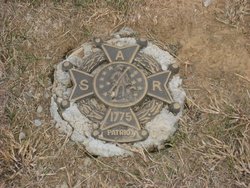Henry/Hendrick BANTA
SAR Patriot #:
P-108395
The following information was assembled from numerous sources and cannot be used directly as proof of Qualifying Service or Lineage.
It is considered a research aid and is intended to assist in locating sources that can be used as proof.
State of Service: PA
Qualifying Service: Patriotic Service
DAR #: A005785
Birth: 1718 New Barbadoes Twp / Bergen / NJ
Death: bef 14 Oct 1805 / Shelby / KY
Qualifying Service Description:
Committee of Observation, York Co., PA
Additional References:
- PA Arch, 6th Series, Vol 2, pg 414.
- The Banta Genealogy, pg 49-60, 97, 178
Spouse: (1) Rachel Brower; (2) Ann Demarest
Children: David; Abraham; Hendrick; Albert; Cornelius; Gurtruid; Mary; Pieter; Samuel; Antie; Geertje; Charity; Lea; John; Anne Antie; Daniel; Gertie Charity; Henry; Rachel;
Members Who Share This Ancestor
| Date Approved | Society | ACN | SAR Member Info | Lineage via Child | View Application Detail | |
|---|---|---|---|---|---|---|
| 1962-07-31 | OH | Unassigned | Joseph Shafer Banta (88861) | Henry | ||
| 1976-06-08 | TX | Unassigned | John Robert Langford (110721) | David | ||
| 1977-12-28 | IL | Unassigned | John Smith MD (113497) | Pieter | ||
| 1981-05-27 | TX | Unassigned | Albert B Welch (109949) | Henry | ||
| 1985-02-26 | MI | 230569 | Howard McFadden List (125350) | Rachel | ||
| 1985-04-08 | TX | 229914 | Robert Bruce List (125604) | Henry | ||
| 1985-05-31 | CA | 229680 | Martin Gray Banta (125838) | David | ||
| 2007-02-26 | IN | 27741 | William Wallace Barrett (168861) | Hendrick/Henry | ||
| 2015-10-12 | FL | 65564 | Michael George Conway (189106) | Rachel | ||
| 2018-12-21 | VA | 84248 | David William Gibson (209970) | Hendrick | ||
| 2018-12-21 | VA | 84249 | John David Gibson (209971) | Hendrick | ||
| 2019-07-19 | AZ | 87370 | Ayden William Borgoyne (212247) | David | ||
| 2019-07-19 | AZ | 87371 | Jackson Fynn Borgoyne (212248) | David | ||
| 2023-04-07 | MN | 106222 | Charles Ryken Johnson (225910) | Rachel | ||
| 2023-05-12 | WA | 105934 | Ronald Owen Mains (199001) | Albert |
Location:
Pleasureville / Henry / KY / USA
Find A Grave Cemetery #:
Marker Type:
SAR
SAR Grave Dedication Date:
bef 01 Mar 2011
Comments:
- No stone, only SAR marker
- Find-a-Grave cites
- Hendrick “Father Henry” Banta III
- Birth 09 Dec 1718, Hackensack, Bergen Co., NJ
- Death 14 Oct 1805, Shelby Co., KY
- Photo provided with permission from Carolyn Leonard, Find-a-Grave member #47319116
Directions to Cemetery / Gravesite:
